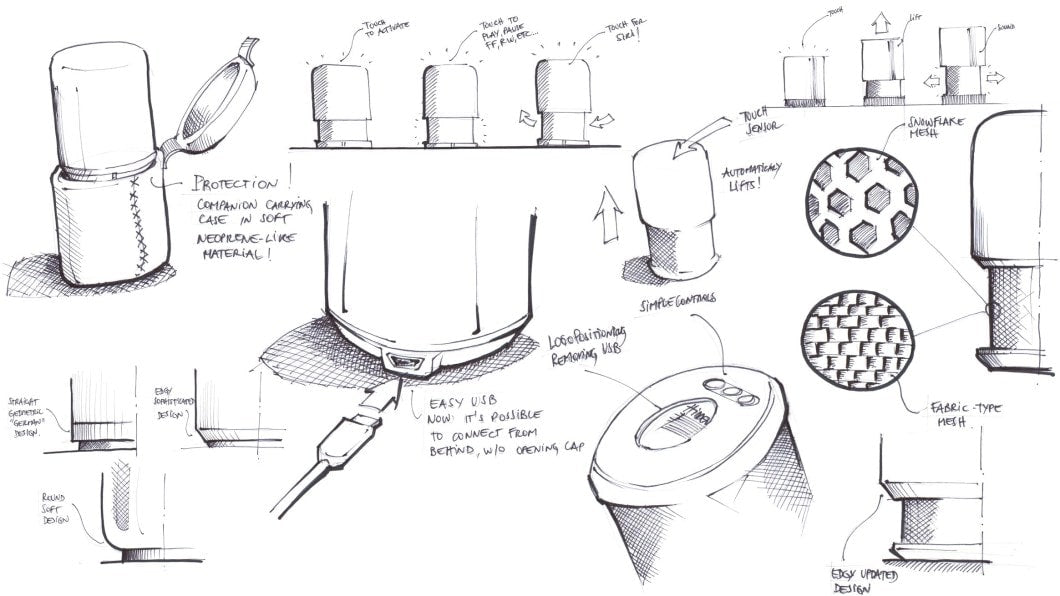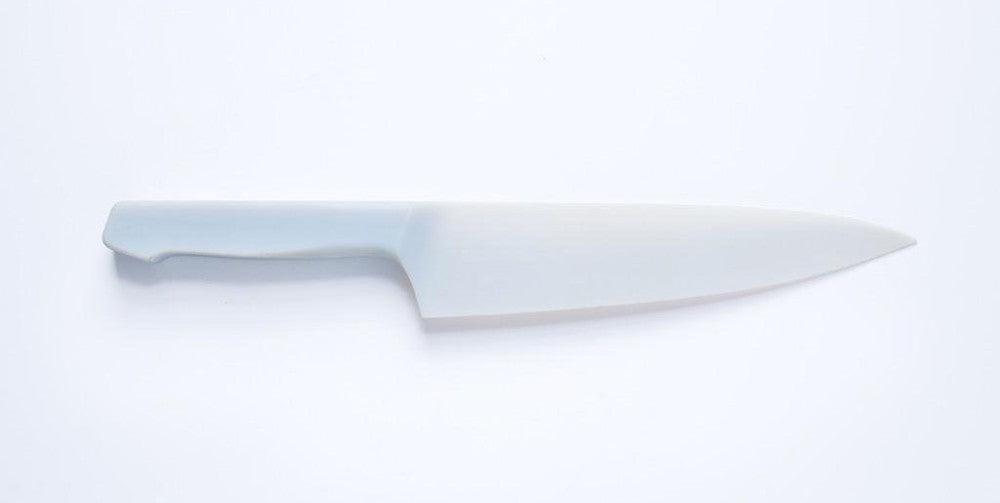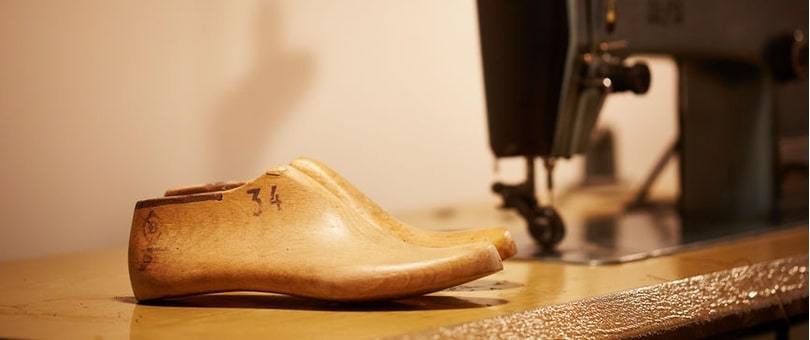Bringing your vision for an original product to life is frequently one of the biggest hurdles for aspiring entrepreneurs.
The product development process can seem almost mysterious, and when you hear the origin stories of other great businesses, the journey to a finished product rarely resembles a straight line.
Tina Roth-Eisenberg, for example, realized that semi-permanent tattoos were lacking when her daughter brought some home, and mobilized her community of fellow designers to create Tattly.
David Barnett, on the other hand, had to teach himself how to use 3D design software so he could prototype PopSockets, the now-popular phone accessory.
On their own, these inspiring stories don’t provide an end-to-end blueprint for product development, but the similarities they share reveal some of the steps founders consistently take on the road to starting a business and shipping a finished product.

Free Guide: How to Find a Profitable Product to Sell Online
Excited about starting a business, but not sure where to start? This free, comprehensive guide will teach you how to find great, newly trending products with high sales potential.
Get How To Find A Product To Sell Online: The Definitive Guide PDF delivered right to your inbox.
Almost there: please enter your email below to gain instant access.
We'll also send you updates on new educational guides and success stories from the Shopify newsletter. We hate SPAM and promise to keep your email address safe.
The new product development process in 6 steps
New product development is the process of bringing an original product idea to market. Although it differs by industry, it can essentially be broken down into five stages: ideation, research, planning, prototyping, sourcing, and costing.
Here's how to develop your own original product idea and what to consider at each stage.
1. Ideation
Many aspiring entrepreneurs get stuck on ideation, often because they’re waiting for a stroke of genius to reveal the perfect product they should sell. While building something fundamentally "new" can be creatively fulfilling, many of the best ideas are the result of iterating upon on an existing product.
The SCAMPER model is a useful tool for quickly coming up with product ideas by asking questions about existing products. Each letter stands for a prompt:
- Substitute (e.g. fur in faux fur)
- Combine (e.g. a phone case and a battery pack)
- Adapt (e.g. a bra with front clasps for nursing)
- Modify (e.g. an electric toothbrush with a sleeker design)
- Put to another use (e.g. memory foam dog beds)
- Eliminate (e.g. the middleman to sell sunglasses and pass the savings on to consumers)
- Reverse/Rearrange (e.g. a duffle bag so that it doesn’t wrinkle your suits)
By asking these questions, you can come up with novel ways to transform existing ideas or even adapt them for a new target audience or problem.
If you're still looking for your "aha!" moment, we also put together a list of sources for coming up with your own product ideas, from analyzing online marketplaces for inspiration to reinventing historical trends.
2. Research
With your product idea in mind, you may feel inclined to leapfrog ahead to production, but that can become a misstep if you fail to validate your idea first.
Product validation ensures you’re creating a product people will pay for and that you won’t waste time, money, and effort on an idea that won't sell. There are several ways you can validate your product ideas, including:
- Talking about your idea with family and friends
- Sending out an online survey to get feedback
- Starting a crowdfunding campaign
- Asking for feedback on forums like Reddit
- Researching online demand using Google Trends
- Launching a “coming soon” page to gauge interest via email opt-ins or pre-orders
However you decide to go about validating your idea, it is important to get feedback from a substantial and unbiased audience as to whether they would buy your product. Be wary of overvaluing feedback from people who “definitely would buy” if you were to create your theoretical product—until money changes hands, you can’t count someone as a customer.
Validation research will also inevitably involve competitive analysis. If your idea or niche has the potential to take off, there are likely competitors already operating in that space.
Visiting your competitors’ website and signing up for their email list will allow you to understand how they attract customers and make sales. Asking your own potential customers what they like or dislike about your competitors will also be important in defining your own competitive advantage.
The information compiled from doing product validation and market research will allow you to gauge the demand for your product and also the level of competition that exists before you start planning.
3. Planning
Since product development can quickly become complicated, it’s important to take the time to plan before you begin to build your prototype.
When you eventually approach manufacturers or start looking for materials, if you don’t have a concrete idea of what you want your product to look like and how it will function, it’s easy to get lost in the subsequent steps.
The best place to begin planning is with a hand-drawn sketch of what your product will look like. The sketch should be as detailed as possible, with labels explaining the various features and functions.

You don't need a professional quality drawing since you won’t be submitting it to a manufacturer at this stage. However, if you are not confident that you can produce a legible diagram that will make sense of your product, it is easy to find illustrators for hire on Dribbble, UpWork, or Minty.
Try to use your diagram to create a list of the different components or materials you will need in order to bring the product to life. The list does not need to be inclusive of all potential components, but it should allow you to begin planning what you will need in order to create the product.
For example, a drawing of a purse design could be accompanied by this list:
- Zippers (large and small)
- Silver clasps
- Leather straps
- Protection pouch
- Embossed label
- Interior wallet
Along with the components, you should also begin to consider the retail price or category your product will fall into. Will the product be an everyday item or for special occasions? Will it use premium materials or be environmentally friendly? These are all questions to consider in the planning phase since they will help guide you through not only your product development process but also your brand positioning and marketing strategy.
The packaging, labels, and overall quality of your materials should be considered as well before you continue to the sourcing and costing stages. These will have an effect on how you market your product to your target customer, so it’s important to take these aspects of your product into consideration during the planning phase too.
4. Prototyping
The goal of the prototyping phase during product development is to create a finished product to use as a sample for mass production.
It’s unlikely you will get to your finished product in a single attempt—prototyping usually involves experimenting with several versions of your product, slowly eliminating options and making improvements until you feel satisfied with a final sample.

Prototyping also differs significantly depending on the type of product you are developing. The least expensive and simplest cases are products you can prototype yourself, such as food recipes and some cosmetic products. This do-it-yourself prototyping can also extend to fashion, pottery, design and other verticals, if you are lucky enough to be trained in these disciplines.
However, more often than not, entrepreneurs will work with a third party to prototype their product. In the fashion and apparel industry, this usually involves working with a local seamstress (for clothing and accessories), cobbler (for shoes) or pattern maker (for clothing). These services can usually be found online by Googling local services in the industry.
Most large cities also have art, design or fashion schools where students are trained in these techniques. Administrators from these university or college programs can usually grant you access to their internal job board where you can create a request for prototyping help.
For objects like toys, household accessories, electronics, and many other hard-exterior objects, you may require a 3D rendering in order to make a prototype. Artists or engineers who are trained in computer-aided design and drafting (CAD) software can be contracted to do this, using UpWork or Freelancer. There are also user-friendly online tools such as SketchUp, TinkerCad and Vectary, for founders who want to learn how to create 3D models for themselves.

To get a 3D design turned into a physical model, makers used to have to get molds made for each part. Molds are typically expensive and involve set up fees, for things like tools and dies, that are used to cut and shape pieces of plastic and other hard materials.
Luckily, with the innovation of 3D printing, designs can be turned into physical samples at a much lower cost with a quicker turnaround time.
Chris Little, the founder of Wintersmiths, prototyped his line of barware using Quickparts, and explains that he was able to do so on a budget and within a few days time. Alex Commons of Bulat Kitchen recommends 3D Hubs, which he used to prototype a knife, paying around $30 per 3D-printed model.

5. Sourcing
Once you have a product prototype you’re satisfied with, it is time to start gathering the materials and securing the partners needed for production. This is also referred to as building your supply chain: the vendors, activities, and resources that are needed to create a product and get it into a customers’ hands.
While this phase will mainly involve looking for manufacturing-related services, you may also factor in storage, shipping, and warehousing into your choices at this stage.
In Shoe Dog, a memoir by Nike founder Phil Knight, the importance of diversifying your supply chain is a theme that is emphasized throughout the story. Finding multiple suppliers for the different materials you will need, as well as different potential manufacturers, will allow you to compare costs. It also has an added benefit of creating a backup option if one of your suppliers or manufacturers doesn’t work out. Sourcing several options is an important part of safeguarding your business for the long-term.
When looking for suppliers, there are plenty of resources both online and in person. While it may seem old-fashioned, many business owners choose to attend trade shows dedicated to sourcing. Trade shows like Magic in Las Vegas, provide the opportunity to see hundreds of vendors at once—to see, touch, and discuss materials and build a personal relationship with suppliers, which can be valuable when it comes time to negotiate prices.
During the sourcing phase, you will inevitably come across the decision of whether to produce your product locally or overseas. It is a good idea to compare the two options, as they each have their own advantages and disadvantages.
The most commonly used sourcing platform for overseas production is Alibaba. Alibaba is marketplace for Chinese suppliers and factories, where you can browse listings for finished goods, or raw materials. A popular way of using Alibaba to find a manufacturer is to look for listings with similar products to your own, and then contact the factory to see if they can produce your specific design.
6. Costing
After research, planning, prototyping, and sourcing is done, you should have a clearer picture of what it will cost to produce your product. Costing is the process of taking all of the information gathered thus far, and adding up what your cost of goods sold (COGS) will be, so that you can determine a retail price and gross margin.
Begin by creating a spreadsheet with each additional cost broken out as a separate line item. This should include all of your raw materials, factory set up costs, manufacturing costs, and shipping costs. It is important to factor in shipping, import fees, and any duties you will need to pay in order to get your final product into the customers hands, as these fees can have a significant impact on your COGS depending on where you are producing the product.

If you were able to secure multiple quotes for different materials or manufacturers during the sourcing phase, you can include different columns for each line item that compares the cost. Another option is to create a second version of the spreadsheet, so that you can compare local production vs. overseas production.
Once you have your total COGS calculated, you can come up with a retail price for your product and subtract the COGS from that price to get your potential gross margin, or profit, on each unit sold.
Product development in popular industries
The product development process will naturally vary by industry, so let's take a brief look at what you might have to consider across three of the largest and most well-established industries: Fashion and Apparel, Beauty and Cosmetics, and Food and Beverage.
These three industries have relatively straightforward paths to product development thanks to the many well-documented case studies that can be used for inspiration.
Fashion and Apparel
In the fashion industry, product development usually begins the old school way: with a hand drawn sketch, or the digital equivalent using a program like Procreate.
A sketch is then developed into a sample using a pattern maker or seamstress. During the prototyping phase, a size set is created, which means a range of samples with different measurements for each size you want to sell. Once the size set is finalized, it is put into production.
Rather than make the product, some fashion and apparel businesses choose print-on-demand to produce their clothing in the beginning. Print-on-demand allows you to upload designs to a third party app, that connects your store with a warehouse and screen-printing facility. When an order is placed online, your design is printed on an existing stock of t-shirts, sweaters and various other items on offer, creating a finished product without the need to design the entire garment.
Other factors to consider:
- Hang tags: the branded tag that hangs from a garment and usually contains information like price, size etc.
- Labels: the fabric tags sewed or stamped into a garment that usually contains information about fabric contents and care instructions
- Wash tests: putting your product through wash tests to understand whether it holds up over time and how it should be cared for
Beauty and Cosmetics
The beauty and cosmetics industry includes a wide range of products that is constantly expanding due to wellness and self-care trends. From makeup to bath products and skincare, many beauty brands are focusing on all natural ingredients and sustainability, which makes it easier to prototype a product on your own using everyday ingredients.
White labeling is also popular in the beauty and cosmetics industry, which is the process of finding an existing product or manufacturer, then packaging and branding the products they already produce. Whichever route you decide to take, mass manufacturing for cosmetics is usually done by working with a lab and a chemist to make sure quality stays consistent at scale.
Other factors to consider:
- Labels and warnings: identifying all materials used in the product and any potential reactions
- Laws and regulations: researching FDA regulations and how they pertain to your product and packaging, both where they are produced and where you intend to sell them
- Shelf life: conducting tests and adding necessary expiration dates to products
Food and Beverage
Food and beverage products are among the easiest to start developing at a low cost and from the comfort of your own home. Creating a new energy bar can be as simple as buying ingredients and tweaking the recipe in your own kitchen, like Lara Merriken did when she started Larabar.
In order to move from recipe to packaged goods you can sell in stores or online, you will need to find a commercial kitchen that is licensed to produce food and has passed a health and safety inspection.
These kitchens are usually set up with large ovens and cooking equipment to accommodate large batches, but if you are considering mass production and packaging, a co-packer or co-manufacturer might be a better option. These are manufacturing facilities that specialize in processing raw materials and producing food and beverage products at scale.
Other factors to consider:
- Labels and warnings: ingredient lists, nutritional information to display
- Laws and regulations: many countries have regulations around dietary information, allergen warnings, and health claims that you will need to comply with
- Expiry dates: understanding your product lifetime and how you will produce, package and stock the product to accommodate this
What will you bring to the market?
During product development, each journey to a finished product is different and every industry has its own unique set of quirks involved in creating something new. If you find yourself struggling to figure it all out, remember that every product that came before yours had to overcome the same challenges.
By following these steps as you undergo your own product development process, you can break down the overwhelming task of bringing a new product to market into more digestible phases.
No matter what you’re developing, by putting in all the necessary preparation—through researching, planning, prototyping, sourcing and costing—you can set yourself up for a successful final product

